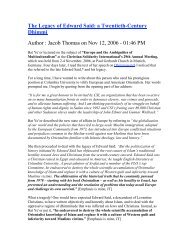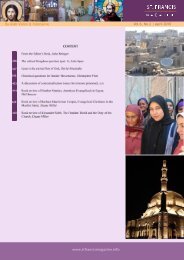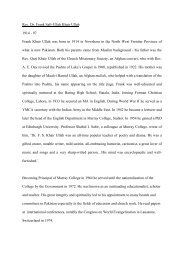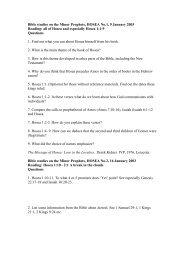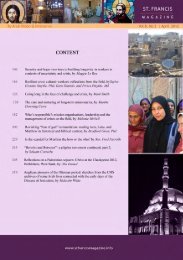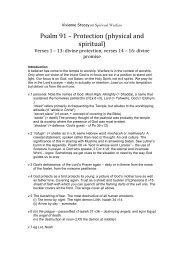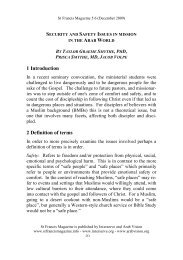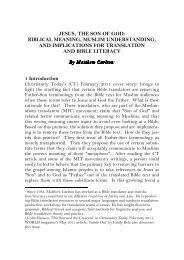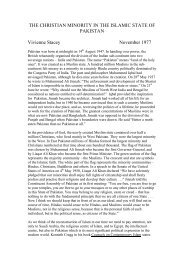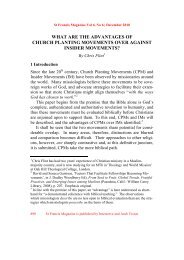download the pdf - St.Francis Magazine
download the pdf - St.Francis Magazine
download the pdf - St.Francis Magazine
You also want an ePaper? Increase the reach of your titles
YUMPU automatically turns print PDFs into web optimized ePapers that Google loves.
<strong>St</strong> <strong>Francis</strong> <strong>Magazine</strong> Vol 8, No 4 | August 2012<br />
his original presentation of <strong>the</strong> spectrum. In a subsequent article<br />
Massey developed this fur<strong>the</strong>r, proposing a M1-M9 spectrum, addressing<br />
diverse Muslim attitudes about Islam (Massey 2000b: 11-<br />
12), but this has not been adopted by later writers.<br />
Picking up on Parshall’s earlier call for dialogue on <strong>the</strong>se matters<br />
(and, possibly, on Parshall’s letter to <strong>the</strong> EMQ editor, reproduced in<br />
Parshall 2000: 112-113), a <strong>the</strong>med edition of <strong>the</strong> International Journal<br />
of Frontier Missions [IJFM] in 2000, edited by Massey, announced<br />
some clarification had been reached, and that ‘Parshall’s<br />
conclusion about C5 was unfortunately based on erroneous descriptions<br />
from alleged “C5 advocates” (Massey 2000a).’Certainly this<br />
IJFM issue clarified <strong>the</strong> C5 agenda, even if it demonstrated that<br />
Parshall’s criticisms were not fully resolved (cf. Parshall 2003: 59-<br />
75).<br />
For example, Massey asserted that C5 does not lead to C6 (Massey<br />
2000b: 9), a claim later contradicted by subsequent C5 advocates<br />
seeing very fluid distinctions among C4-C6 (Brown, in Corwin et al.<br />
2007: 13-14). Also, Massey reiterated his call for a recognition of<br />
God’s not entirely predictable diversity, and argued that C5 adherents<br />
identifying <strong>the</strong>mselves as ‘Muslim followers of Jesus,’ was<br />
analogous to <strong>the</strong> identity asserted by Messianic Jews (Massey<br />
2000b: 7; cf. Bro<strong>the</strong>r Yusuf, in Corwin et al. 2007: 8-9). Identity involves<br />
“both <strong>the</strong>ology and culture,” (Massey 2000b: 9) but <strong>the</strong> relationship<br />
and <strong>the</strong> balance of power between <strong>the</strong>se two aspects remained<br />
unclear.<br />
It is important to note a significant biographical, self-reflective<br />
dimension among those writing about C5 ministries. Thus, Bernard<br />
Dutch picking up this identity question, reflected on his own experiences<br />
as an American in <strong>the</strong> Middle East, not least during <strong>the</strong> first<br />
Gulf War in 1991 and – from this position – judged self-identity<br />
among MBBs to be “multi-faceted,” defying simple explanations and<br />
thus frequently frustrating external expectations, such that cultural<br />
outsiders “often see <strong>the</strong> issue in false clarity.” (Dutch 2000: 15)<br />
Conversely, Dutch saw <strong>the</strong> term ‘Christian’ as not “a God-ordained<br />
<strong>St</strong> <strong>Francis</strong> <strong>Magazine</strong> is a publication of Interserve and Arab Vision 461




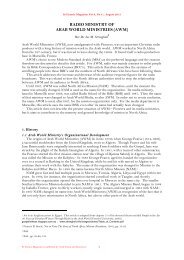
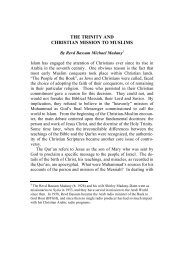
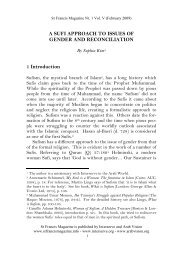
![Reflections on Surah Fatiha and the Lord's Prayer[1] - St.Francis ...](https://img.yumpu.com/49377951/1/184x260/reflections-on-surah-fatiha-and-the-lords-prayer1-stfrancis-.jpg?quality=85)
